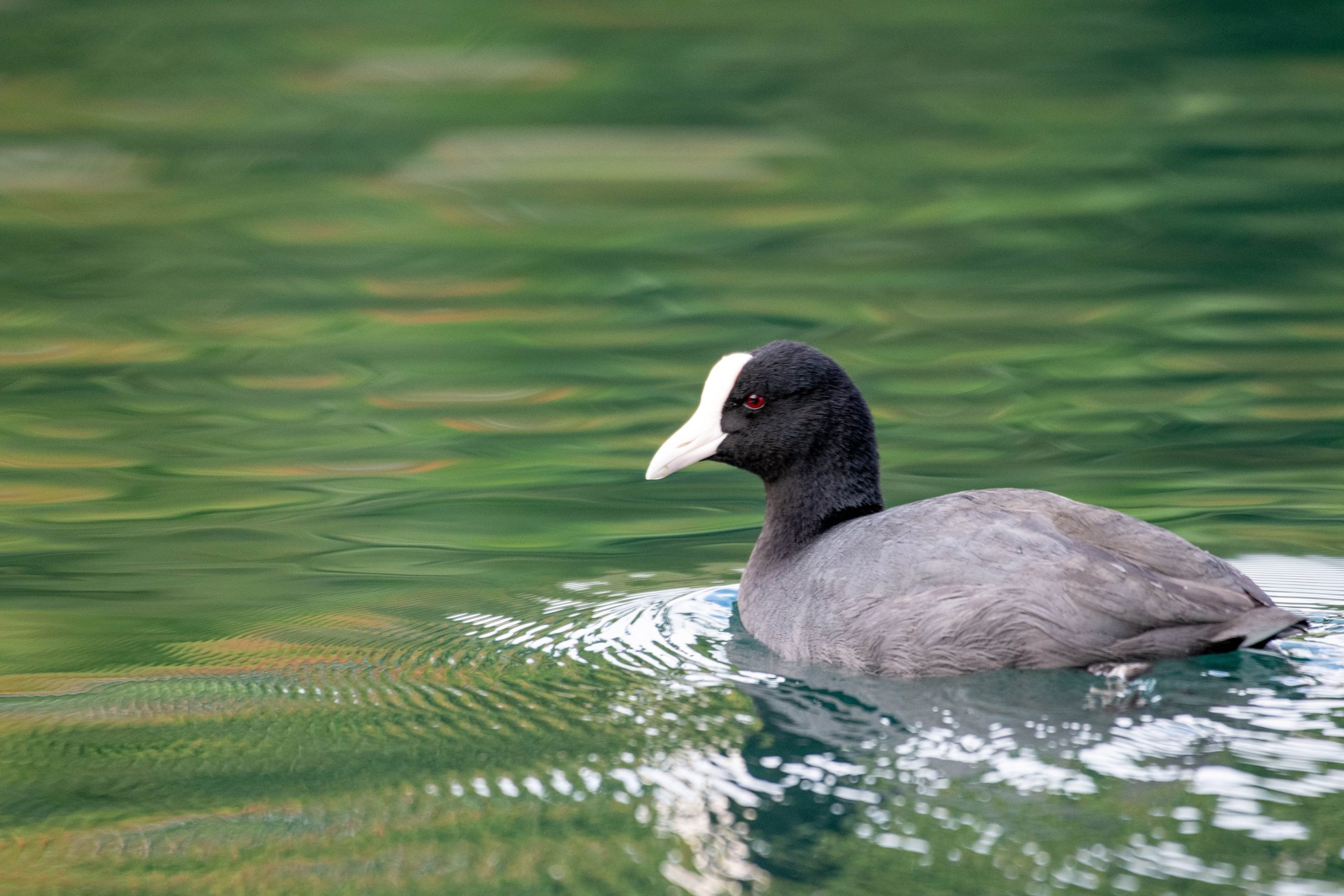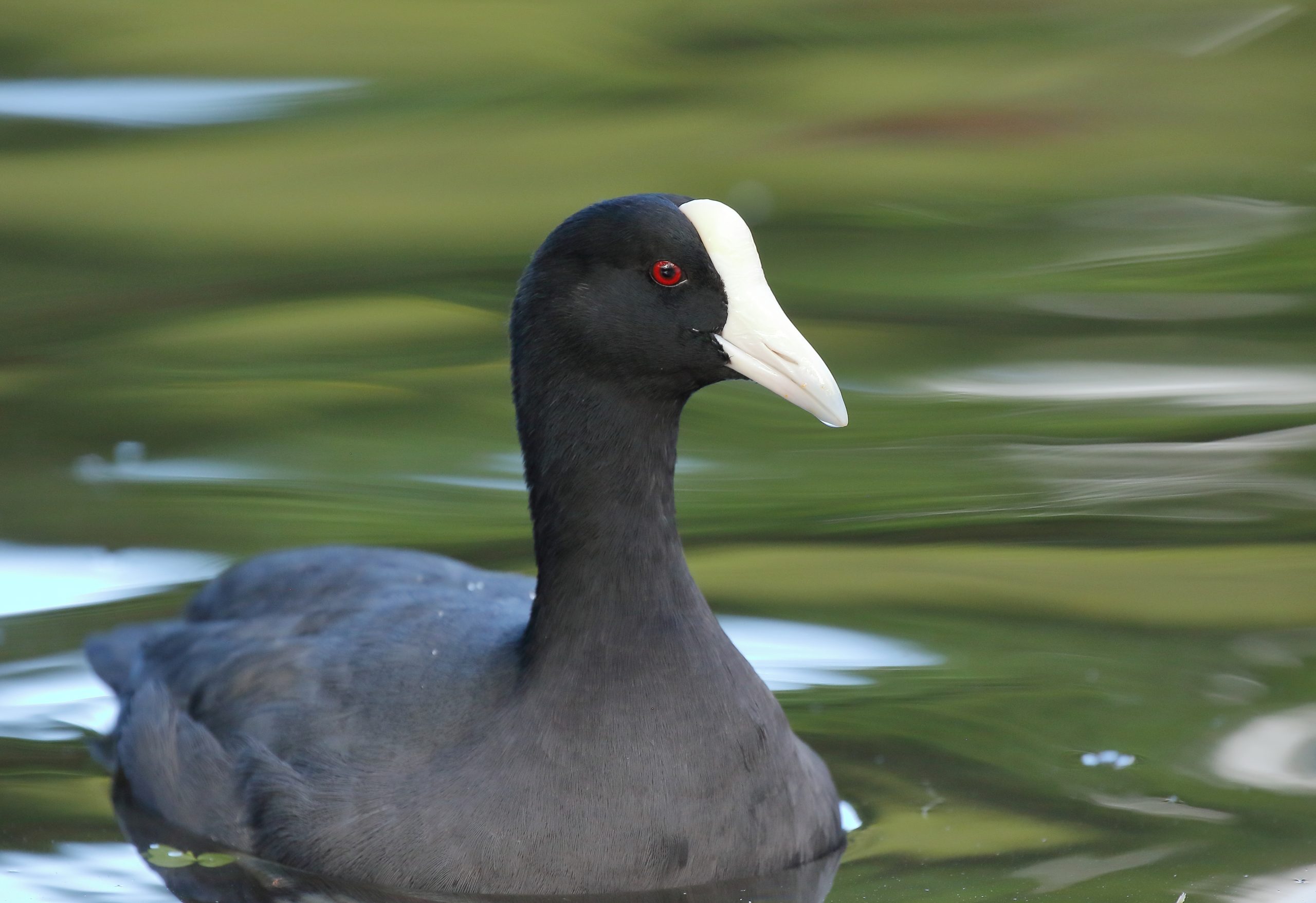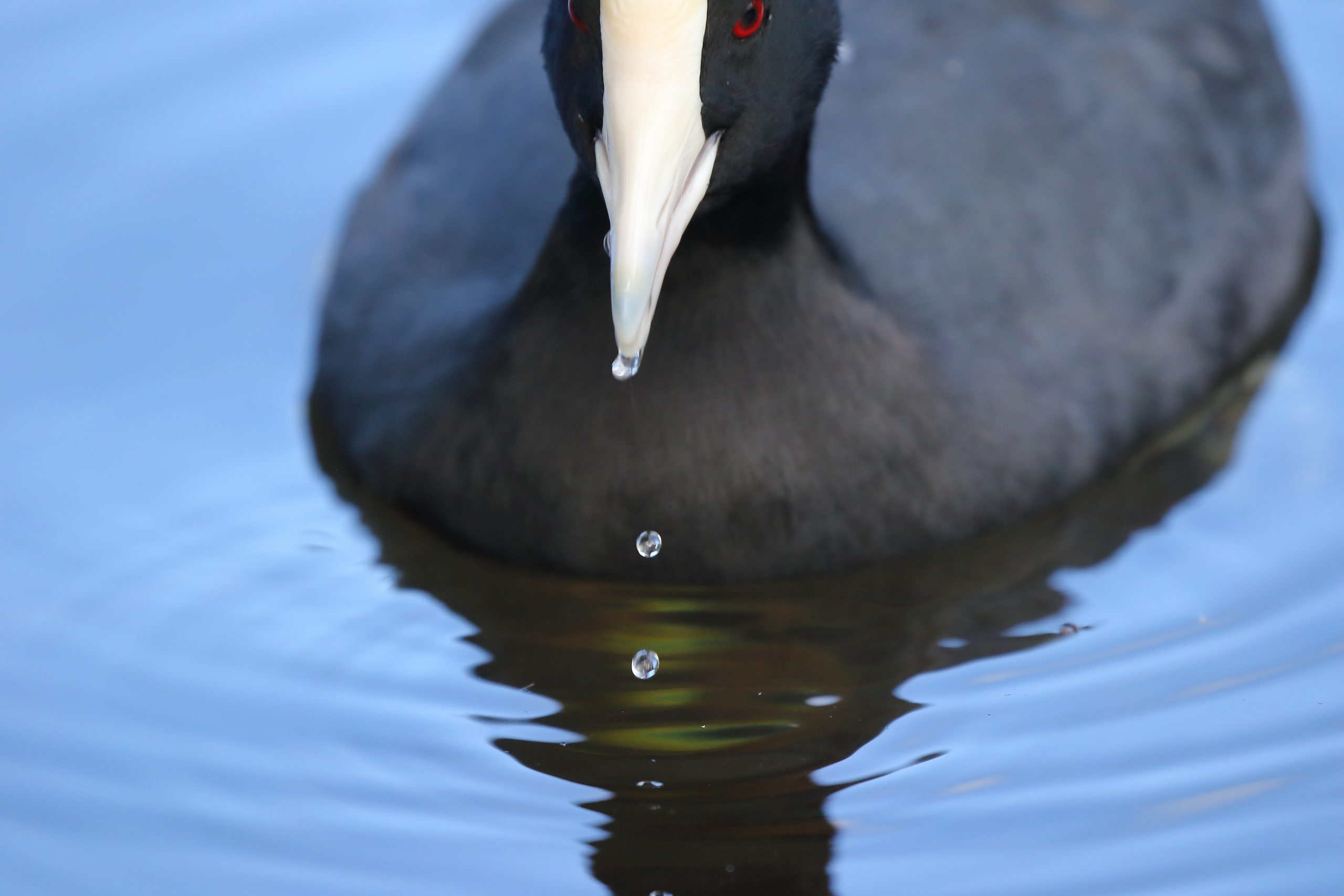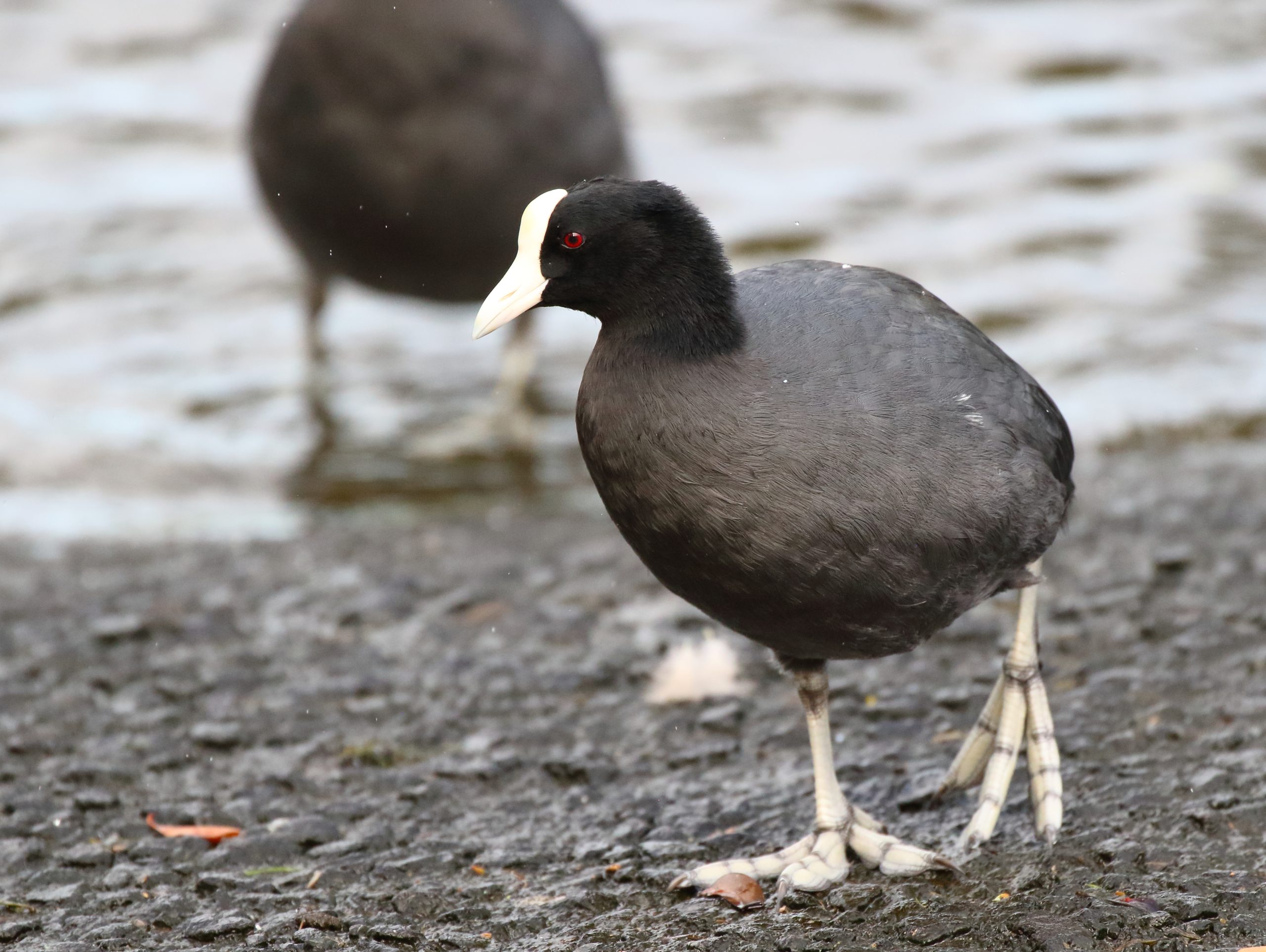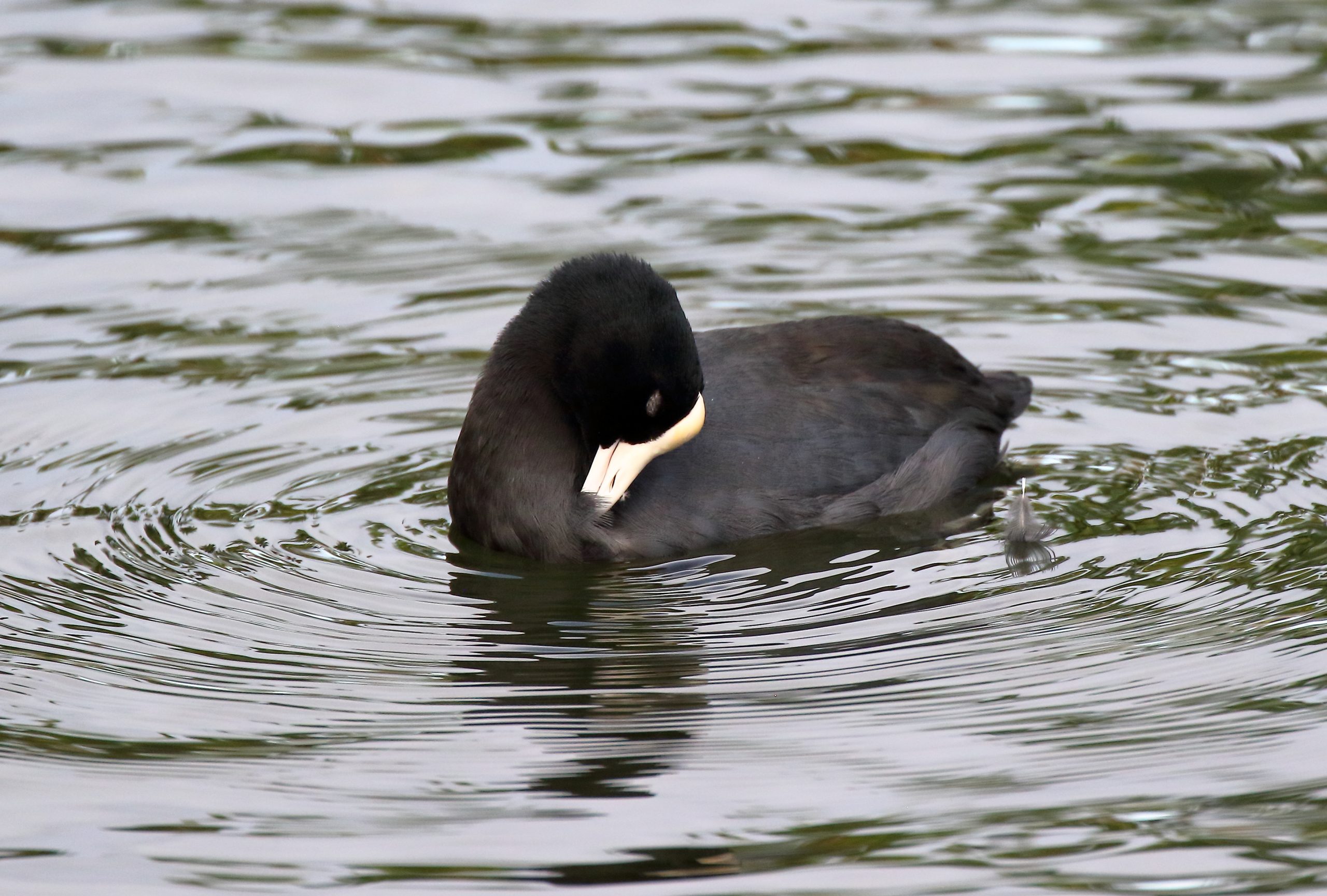ʻAlae keʻokeʻo

Names
- ʻŌlelo Hawaiʻi: ‘Alae ke‘oke‘o
- Common: Hawaiian coot
- Scientific: Fulica alai
Song
Conservation Status
- Federally Listed as Endangered
- State Listed as Endangered
- IUCN Red List Ranking – Vulnerable
Species Information
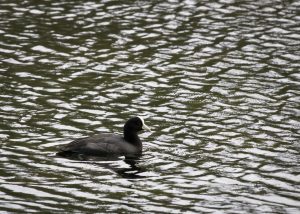
ʻAlae keʻokeʻo. PC: Keri Rouse
The ‘alae ke‘oke‘o or Hawaiian coot is a small waterbird (Family: Rallidae) endemic to Hawai‘i. Adult males and females have a black head, a slate gray body with white undertail feathers, and a prominent white frontal shield and bill; feet are lobed rather than webbed and are greenish gray. The Native Hawaiian considered ‘alae ke‘oke‘o to be a deity but also considered it good to eat. Life history and breeding biology are poorly known. The species tends to form groups of their same king. Uses freshwater and brackish wetlands, including agricultural (e.g., taro fields) wetlands and aquaculture ponds. ‘Alae ke‘oke‘o are generalists, which mean they thrive in a wide variety of environmental conditions and can make use of a variety of different resources. It feeds on land, from the surface of the water, and underwater; also, they will graze on grass adjacent to wetlands. Food items include seeds and leaves, snails, crustaceans, insects, tadpoles, and small fish. The species will travel long distances, including between islands, when local food sources are depleted. Nesting habitat includes freshwater and brackish ponds, irrigation ditches, and taro fields. Floating nests are constructed of aquatic vegetation and found in open water or anchored to emergent vegetation. Open water nests are usually composed of mats of water hyssop (Bacopa monniere) and Hilo grass (Paspalum conjugatum). Nests in emergent vegetation are typically platforms constructed from buoyant stems of species such as bulrush. Nesting occurs year-round, but mostly between March and September. Nest initiation is tied to rainfall because appropriate water levels are critical to nest success. The number of eggs layed range from three to ten eggs. The young birds hatch in a advanced stage (precocial) after a 25-day incubation period.
Distribution
The ‘alae ke‘oke‘o occurs in coastal plain wetlands usually below 400 meters (1,320 feet) elevation on all the Main Hawaiian Islands except for Kaho‘olawe. However, breeding is restricted to relatively few sites. About 80 percent of the population occurs on Kaua‘i (Hanalei, Hulē‘ia, Opaeka‘a), O‘ahu (coastal wetlands and reservoirs, such as Lake Wilson and Nu‘uanu Reservoir, Kahuku Point, and along the windward shore), and Maui (Kanahā and Keālia Ponds, Nu‘u Pond). The remaining 20 percent of the population occurs in coastal ponds and playa wetlands, such as Paialoa Pond on Moloka‘i, the Lāna‘i City wastewater treatment ponds, ‘Aimakapā and ‘Ōpae‘ula ponds on the Kona Coast, and Waiākea and Loko Waka ponds on the island of Hawai‘i.
Habitat
The ‘alae ke‘oke‘o uses lowland wetland habitats with suitable emergent plant growth interspersed with open water, especially freshwater wetlands and taro fields, but also freshwater reservoirs, canefield reservoirs, sewage treatment ponds, brackish wetlands, and, rarely, saltwater habitats. On Kaua‘i, some birds occur in plunge pools above 1,495 meters (4,900 feet) elevation, and on the island of Hawai‘i, stock ponds up to 2,000 meters (6,600 feet) elevation. They typically forage in water less than 30 centimeters (12 inches) deep but will dive in water up to 120 centimeters (48 inches) deep. Compared to ‘alae ‘ula (Hawaiian moorhen), ‘alae ke‘oke‘o forages in more open water. Logs, rafts of vegetation, narrow dikes, mud bars, and artificial island are important for resting. Ephemeral wetlands support large numbers during nonbreeding season and may provide a key habitat. Some important habitats are located in National Wildlife Refuges and State sanctuaries and receive management attention, but others remain unprotected, such as wetlands facing development or those used for agriculture or aquaculture. Examples include playa lakes on Ni‘ihau; Opaeka‘a marsh; Lumaha‘i wetlands on Kaua‘i; Amorient prawn farms; Lā‘ie wetlands; Uko, Punaho‘olapa, and Waihe‘e marshes; Waialua lotus fields; Waipi‘o Peninsula ponds on O‘ahu; Paialoa and ‘Ō‘ō‘ia playa fishponds on Moloka‘i; and Opae‘ula and Waiākea-Loko Waka ponds on the island of Hawai‘i.
Threats
Similar to the rest of Hawaiian native waterbirds, ‘alae ke‘oke‘o are threatened by:
- Habitat loss. In the last 110 years, approximately 31 percent of coastal plain wetlands have been lost. A shift from wetland agriculture to other agriculture crops also has reduced the amount of wetland habitats.
- Introduced and native predators. Dogs (Canis familiaris), rats (Rattus spp.), feral cats (Felis silvestris), the small Indian mongoose (Herpestes auropunctatus), cattle egrets (Bulbulcus ibis), barn owls (Tyto alba), and bullfrogs (Rana catesbeiana) all potentially prey on adults or young.
- Altered hydrology. Altering wetland habitats for flood control or to allow them to serve as municipal water sources makes them generally unsuitable for ‘alae ke‘oke‘o.
- Nonnative invasive plants. Several species of invasive plants, including pickleweed (Batis maritima), water hyacinth (Eichornia crassipes), and mangrove (Rhizophora mangle) reduce open water, mudflats, or shallows.
- Avian diseases. Botulism outbreaks result in mortality. West Nile virus and avian flu may pose a risk to Hawaiian waterbirds if these diseases reach Hawai‘i.
- Environmental contaminants. Fuel and oil spills in wetlands result in toxicity and habitat degradation.
- Climate change. Sea level rise due to climate change may result in a loss of coastal wetland habitats used by Hawaiian waterbirds.
Learn more
Plans & Projects
- State of Hawai’i Biannual Waterbird Surveys
- Kawainui Marsh Wetland Restoration and Habitat Enhancement Plan
- Kawainui-Hāumākua Marsh Master Plan Final EIS
Photos
Additional Resources
For more information and references visit the DLNR State Wildlife Action Plan factsheets. DOFAWʻs species pages and State Wildlife Action Plan fact sheets are provided for general information and are not meant to be a citable, original source of data. If you are a student, researcher, or writer looking for a citable source, please explore the references below or find other original data sources, rather than citing these webpages. The references below were provided by the authors of the State Wildlife Action Plan fact sheets at the time of drafting:
- IUCN Red List of Threatened Species. 2015. Version 2014.3. www.iucnredlist.org. (Accessed May 2015).
- Pratt DH, Brisbin IL. 2002. Hawaiian coot (Fulica alai). In The Birds of North America, No. 697 (Poole A, Gill F, editors). Philadelphia, (PA): The Academy of Natural Sciences; and Washington DC: The American Ornithologists’ Union.
- U.S. Fish and Wildlife Service. 2010. Hawaiian coot or ‘alae ke‘oke‘o (Fulica alai) 5-year review: summary and evaluation. U.S. Fish and Wildlife Service, Honolulu, Hawai‘i.
- U.S. Fish and Wildlife Service. 2011. Recovery plan for Hawaiian waterbirds, Second Revision. U.S. Fish and Wildlife Service, Portland, Oregon.

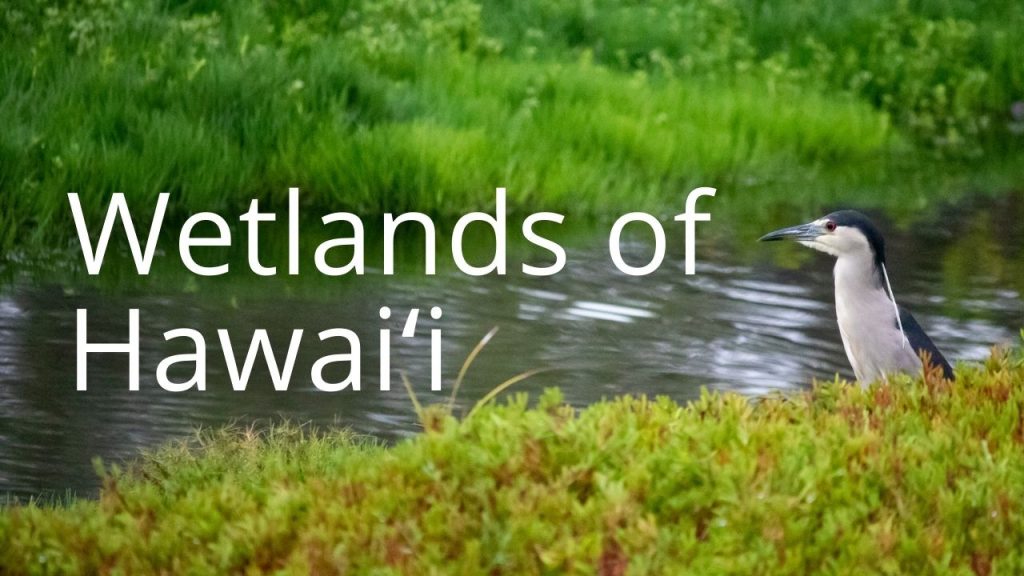 Wetlands of Hawaiʻi Story Map
Wetlands of Hawaiʻi Story Map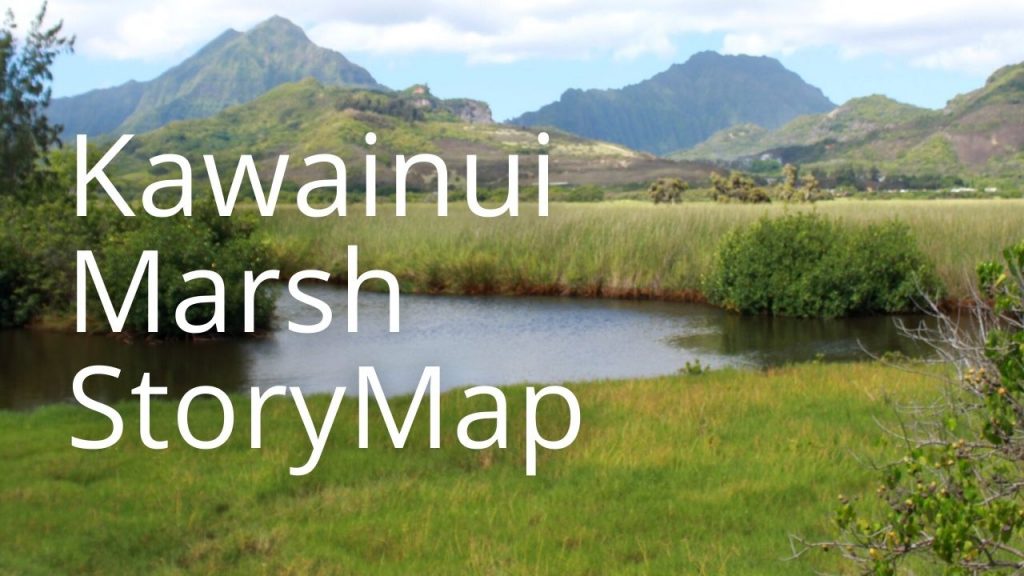 Kawainui Marsh Story Map
Kawainui Marsh Story Map Kawainui Marsh Virtual Tour
Kawainui Marsh Virtual Tour Pouhala Marsh Story Map
Pouhala Marsh Story Map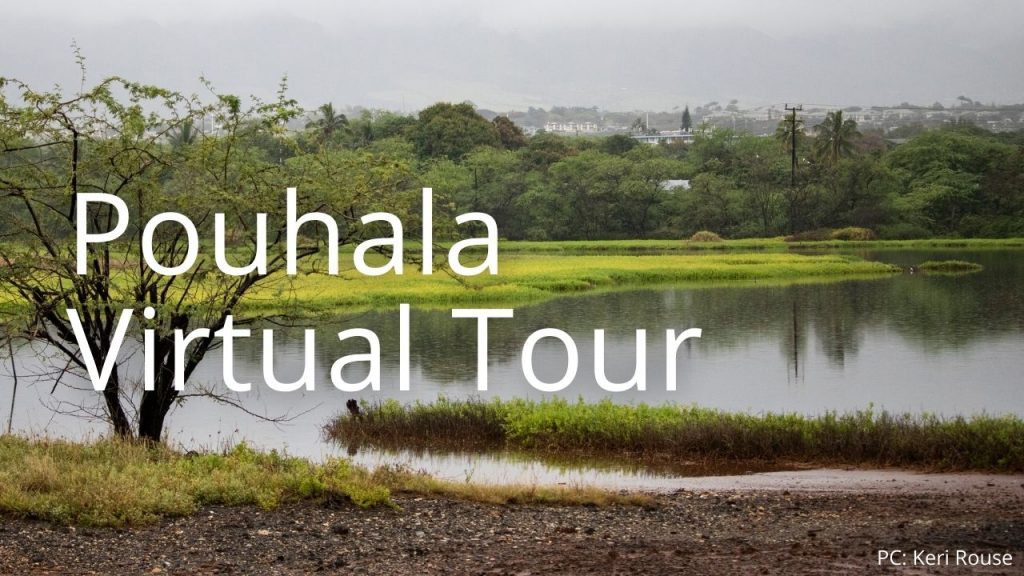 Pouhala Marsh Virtual Tour
Pouhala Marsh Virtual Tour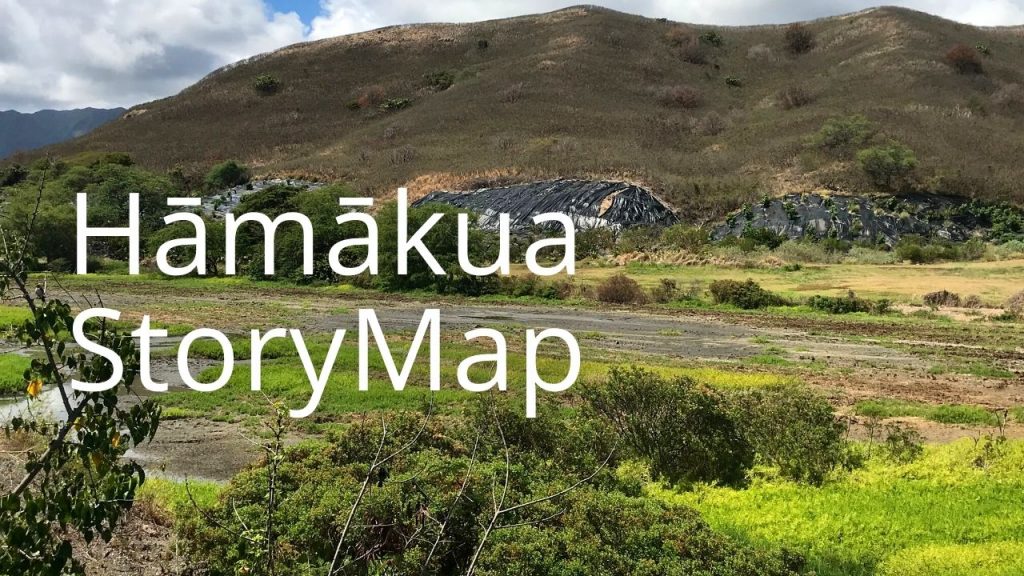 Hāmākua Marsh Story Map
Hāmākua Marsh Story Map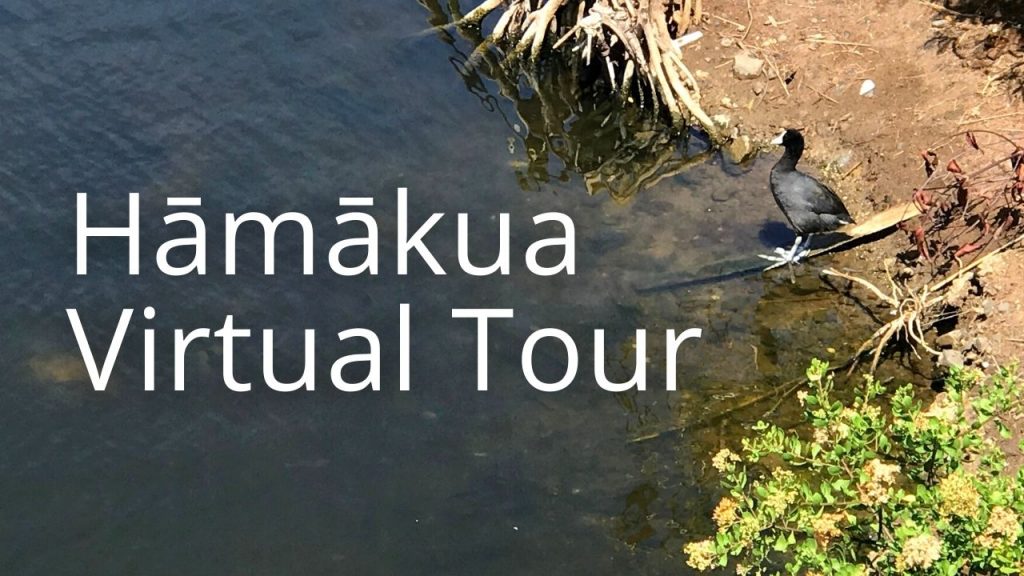 Hāmākua Marsh Virtual Tour
Hāmākua Marsh Virtual Tour